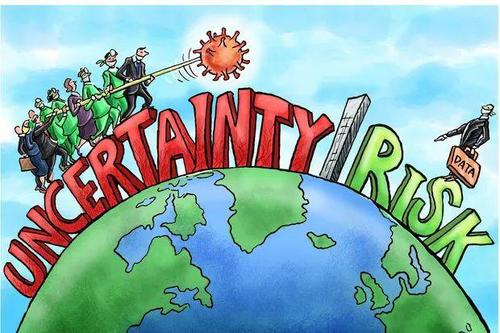Chinese textile companies need to prepare for the “post-pandemic” era
Oct 09, 2020 | by Zhao xh

Orders of large enterprises are gradually recovering, and uncertainty has become an important factor hindering enterprises from receiving orders.
In the second quarter, the country’s cumulative exports of textiles and apparel increased by 19.2%, among which the exports of traditional bulk commodity yarns, fabrics and knitted garments, except for anti-pandemic materials, fell by 28.5% in total. In July at the beginning of the third quarter, the rebound in the external demand market drove the decline in bulk commodity exports to rapidly narrow to 10%. Corresponding to the data, it is learned through enterprise surveys that at present large enterprises generally report that orders other than anti-pandemic materials have begun to recover or even become saturated, and enterprise production and exports are gradually returning to the right track, but because importers have put forward new requirements on payment terms and payment methods under the situation that the foreign pandemic has not yet been fully alleviated, companies are worried that this will repeatedly lead to the risk of receiving payments. It is predicted that if the global pandemic continues to be relieved before the end of the year, exports in the third to fourth quarters will continue to stabilize, and the overall trend will continue to improve, but the speed of the rebound will not be too fast.
With the recovery of industrial transfer, Chinese textile companies need to prepare for the “post-pandemic” era.
During the global pandemic, due to reliance on China’s anti-pandemic supplies and trust in China’s strong and stable supply capabilities, the main markets returned to China for procurement. The market share of Chinese products was once high. With the gradual relief of the pandemic, markets such as the European Union, the United States, and Japan have refocused their sights on ASEAN, South Asia, and countries and regions with geographical advantages, and the market share of Chinese products has fallen again. Large brands such as Uniqlo have expanded their purchasing center from Shanghai to Vietnam, showing strong signs of order transfer. Chinese textile companies need to focus on changes in purchasing trends, lay out in advance, and make coping strategies.
Political factors have intensified the challenges facing China’s textile and apparel industry chain, and it is imperative to form a regional industrial alliance.
The degree of political intervention in the market has been deepening. The major developed countries have further accelerated the process of market procurement diversification under the impetus of political factors. After the outbreak, the United States, the European Union and other developed countries realized the lack of their own industries, and gradually attracted ASEAN, India and other places to form and expand their own industrial chain regional layout, forming a confrontation with China. At the same time, although the upstream and downstream supporting facilities are not perfect, and the main intermediate products still rely on imports from China, in order to protect their own industries, ASEAN countries have also initiated trade remedy investigations on Chinese textiles, and they are becoming more and more intense. In the face of multiple pressures, the Chinese government, intermediary organizations, and companies need to interact and cope with it together. Accelerate the promotion of free trade agreement negotiations or upgrade negotiations, establish a good open and business environment, and form cooperative partnerships with neighboring countries and “Belt and Road” countries. Form a regional industrial alliance to form a benign pattern led by mutual benefit, win-win, and coordinated development. While helping neighboring countries to improve their industrial base, China will gradually become a high-value-added industrial center focused on design and research and development.








